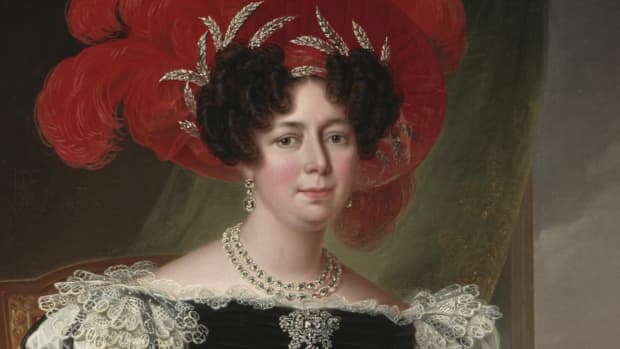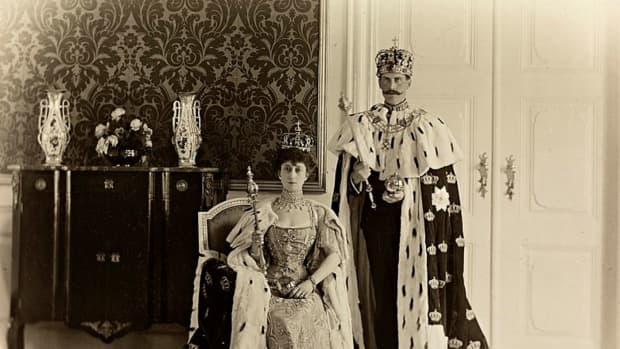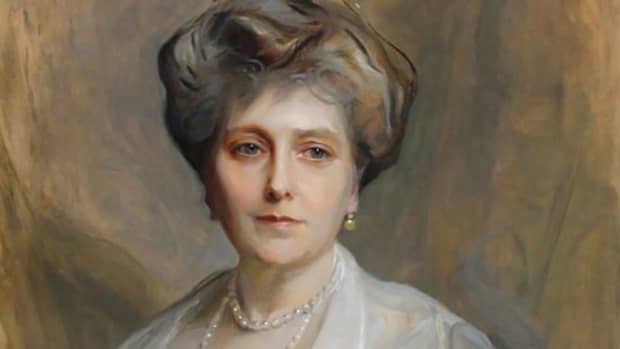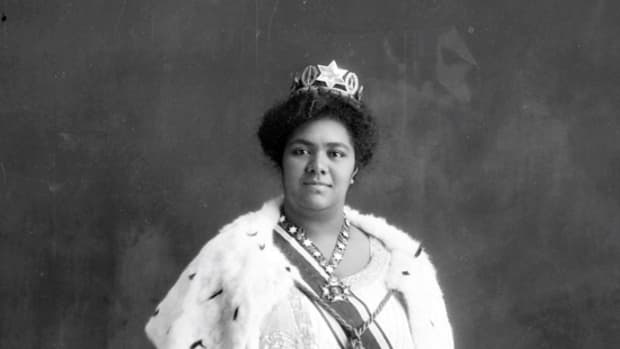Queen Astrid of Belgium: Lost 29 August 1935
Princess Astrid of Sweden's Happy Upbringing
Princess Astrid was born into Sweden's royal Bernadotte dynasty on 17 November 1905. She was the daughter of Carl of Sweden and Ingeborg of Denmark, the Duke and Duchess of Vastergotland.
Christened Astrid Sofia Lovisa Thyra of Sweden, she was connected through several dynastic marriages to the royals of Denmark and Norway.
She had two older sisters, Margarethe and Martha, and a younger brother, Carl. Her family was known to the Swedes as the "happy family." They were close and lived informally for royals. The children were allowed to go out shopping alone; they learned first aid, childcare and housekeeping. Their "play" cottage had a stove so that they could learn how to complete cooking tasks.
She was not academically gifted, but Astrid made up for this with boundless charm, affability and a love of nature and sports, including golf and skiing. Astrid was an excellent cook.
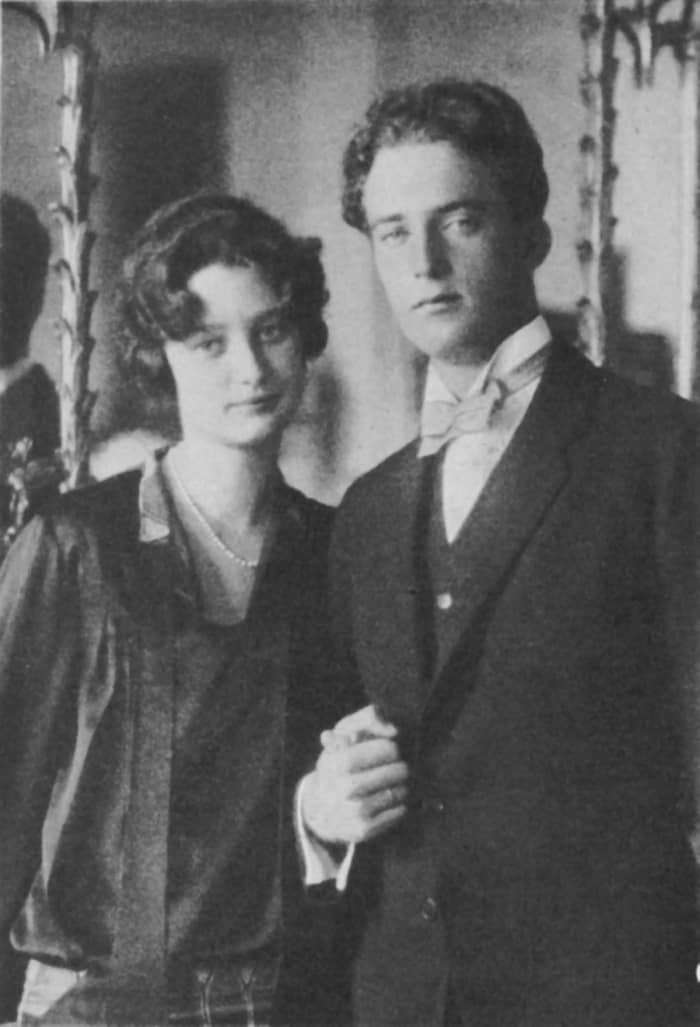
Princess Astrid of Sweden and Prince Leopold of Belgium's engagement photograph, 1926
Wikipedia Public Domain
Love: Prince Leopold of the Belgians
In 1905, when Norway and Sweden became independent of one another, Astrid's parents were considered as new monarchs for Norway. The throne was given to Ingeborg's brother, Prince Carl of Denmark, and his wife, Maud, a daughter of Edward VII and Queen Alexandra of Britain.
In 1919, Margarethe married Prince Axel of Denmark, and in 1929, Martha married the future King Olav V of Norway. Astrid was tipped to be the wife and queen consort of the future Edward VIII of Britain, but this came to nothing. She married for love, not dynastic reasons. He sacrificed his throne for love.
Princess Astrid of Sweden and Prince Leopold of Belgium were distant cousins thanks to a shared Bavarian ancestor, and he, too, had enjoyed a happy and relatively simple childhood. He was interested in horticulture and a range of sports, just as Astrid was.
Their engagement was announced in September 1926. Their civil marriage was conducted in Stockholm on 4 November 1926, and six days later, the religious ceremony took place at the Cathedral of St. Michael and St. Gudula in Brussels, Belgium.

A bust of Astrid in the Parc de Wistwersee in the Walloon-Brabant province, central Belgium. Prior to becoming a queen consort, she was the Duchess of Brabant.
Wikipedia/EmDee CC4.0
Duke and Duchess of Brabant and Belgian Monarchs
Leopold and Astrid, the Duke and Duchess of Brabant, lived in Styvenberg Castle in Laeken near Brussels. King Albert I of the Belgians' Laeken Palace was a short distance away.
Astrid was popular in her adopted country, and her charitable endeavours won her praise. She liked to chat with people and do her own shopping, and the Belgians appreciated her integrity and lack of grandiosity.
When Leopold and Astrid's first child, Josephine-Charlotte, was born in 1927, there was great celebration. Prince Badouin's arrival in 1930 was dynastically, publicly and privately a cause for jubilation.
Their third and last child, Albert, was born in June 1934, just a few months after Leopold and Astrid became king and queen consort of the Belgians. The 58-year-old King Albert I died when climbing a mountain alone on 17 February 1934. His death sent shockwaves throughout his realm and across the world. The naming of their son was the couple's tribute to him.
Leopold and Astrid's commitment to their new roles was commendable. Astrid juggled being a queen consort with being heavily pregnant in the first few months and raising her young family.
Recommended
A Horror Car Crash in Switzerland
It was the last day of the family's holiday in Switzerland. Josephine-Charlotte, Badouin and Albert had set off home earlier in the day, 29 August 1935. Astrid and Leopold decided to take one last outing around Lake Lucerne before travelling home themselves.
Leopold was in the driver's seat of their convertible, and Astrid sat beside him. (According to some reports, their chauffeur was sat in the car too, but no more was said of him after the event). They drove along the mountain roads, taking in the scenery. Astrid pointed to something she spotted; Leopold followed her hand with his eyes and lost control of the car.
It plunged down a steep slope, stopping only when it hit a tree trunk. Both of them (again, there was no more information about a chauffeur) were thrown from the car, and Leopold was badly injured, but Astrid was fatally catapulted towards a pear tree as she flew from the car.
Queen Astrid of Belgium, just 29 years old, was lost. She was given a state funeral and was buried in the royal crypt at the Church of Our Lady of Laeken. A memorial and chapel were created in her memory.
Leopold III After Astrid's Death
His second marriage to the severe and strict (Mary) Lilian Baels in 1941 was unpopular because many Belgians were devoted to Astrid's memory. Lilian was styled as Princess of Rethy and not as the queen consort. This marriage brought three children: Alexandre (b.1942), Marie-Christine (b.1951) and Marie-Esmerelda (b.1956).
At the outbreak of World War Two in autumn 1939, Belgium announced its neutrality, but the Germans invaded. The entire Belgian government swiftly fled to London, but Leopold showed a spirited determination to remain with Belgian troops on Belgian soil. He was forced into exile after one week, and rather than celebrating his courage, the government, from the safety of England, accused him of exceeding his authority.
Their view was that it was the government's role and not the king's to decide when and how the king went into exile. They wanted to oust him and install an obedient regent, but they couldn't convene a meeting of all of Belgium's political bodies during the war. Hence, they criticised Leopold relentlessly to pass their time in exile.
Leopold Abdicates
In 1944, Leopold's younger brother Charles was proclaimed the regent of Belgium. Leopold was accused of treason, and after six years of wrangling and a public referendum that gave him a slim victory, he and his family stepped back into their homeland in July 1951.
Just 10 tumultuous days later, Leopold abdicated, and Badouin was made king. You can learn more about his life here. Today, Phillipe, Badouin's nephew through Albert, is king.
Both Leopold and Lilian were buried in the royal crypt beside Astrid in 1983 and 2002, respectively.
Sources
- Queen Astrid of Belgium | Unofficial Royalty
- Tragic Facts About Astrid Of Sweden, The Snow Princess
Princess Diana is of the great tragedies of the 20th century…but very few people know about Astrid of Sweden, the Snow Princess. - Leopold III | king of Belgium | Britannica
Related Reading
- Classic Authors and Works of Belgian Literature
From Hendrik Conscience to Virginie Loveling, here is a list of some of Belgium's most important authors and their classic works. - Which Language Do They Speak in Belgium?
Belgium has three official languages: Dutch (Flemish), French, and German. The nation's relationship with language, however, is complicated.
This content is accurate and true to the best of the author’s knowledge and is not meant to substitute for formal and individualized advice from a qualified professional.
© 2022 Joanne Hayle






